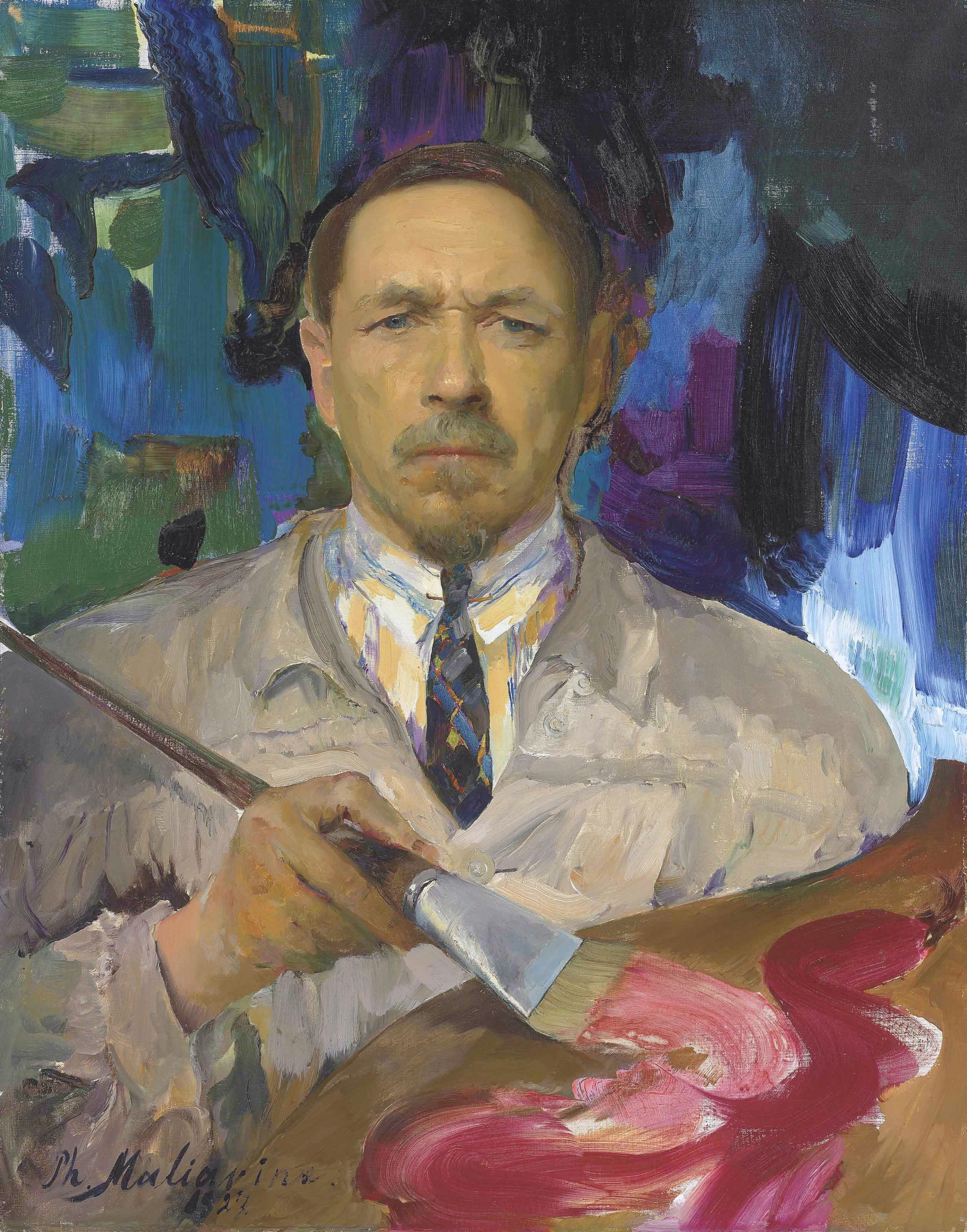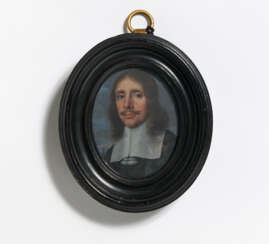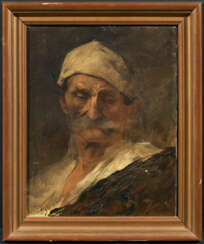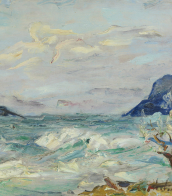portrait of a man

Karl Friedrich Lessing was a German painter of the mid-nineteenth century. He is known as a Romantic painter, a representative of the Düsseldorf School of painting.
Lessing began his career with melancholic-romantic landscapes and paintings on literary subjects. He later gained popularity as a landscape painter. Reproductions of his works were widely printed in German magazines of the XIX century. Later Lessing switched to historical subjects, creating historical paintings, as well as frescoes.
Lessing was a member of various art societies and academies, both German and foreign.


Ludwig Meidner is a German painter and writer, a representative of the expressionist school of art. Meidner is best known for his painted and printed portraits and landscapes, but is especially known for his 'apocalyptic' series of works that show his stylised visions of the coming transformation of Germany before the First World War.


Alain Jacquet is a French self-taught artist, a representative of the American Pop Art movement. In his series of works "Camouflages" the artist often contrasts masterpieces of art history, famous paintings of the past to advertising idols of his time. "Botticelli's Camouflage" (Birth of Venus) is one of his famous works.
Among other things, Jacquet used the techniques of silkscreen printing, photomechanical transfer and screen printing.


Franz von Stuck was a German painter, sculptor, printmaker, and architect. Stuck was best known for his paintings of ancient mythology, receiving substantial critical acclaim with The Sin in 1892.


Vasily Vasilievich Vereshchagin (Russian: Васи́лий Васи́льевич Вереща́гин) was a Russian painter, known for his poignant and realistic depictions of war. He was born in 1842 in Cherepovets, Russia, and is celebrated for his dramatic and often controversial paintings that depicted the brutal realities of warfare.
Vereshchagin’s work stands out for its unflinching portrayal of the human cost of conflict. Unlike many of his contemporaries, he focused on the devastating consequences of war rather than glorifying it. His series of paintings from the Russo-Turkish War and his iconic piece, "The Apotheosis of War," are housed in prestigious institutions like the Tretyakov Gallery in Moscow and the Russian Museum in Saint Petersburg.
Collectors and art experts value Vereshchagin’s works for their historical significance and emotional depth. His paintings not only serve as powerful artistic statements but also as historical documents that provide insight into the wars of his time. For those interested in acquiring or learning more about Vereshchagin’s works, subscribing to updates about upcoming sales and auction events can be incredibly valuable.
Sign up to receive updates on new product sales and auction events related to Vasily Vasilievich Vereshchagin.


Filipp Andreevich Malyavin (Russian: Филипп Андреевич Малявин) was a Russian artist whose journey from a novice in a monastery to a renowned painter in Europe is as vibrant and eccentric as his artworks. Born into a poor peasant family in the village of Kazanka, Samara province, Malyavin's early fascination with art propelled him from creating clay figurines and drawings in his village to studying under the tutelage of Ilya Repin at the Saint Petersburg Academy of Arts. His unique approach to painting, characterized by large canvases, the bold use of the color red, and dynamic brushstrokes, distinguished his work from his contemporaries.
Malyavin's most notable early works include "Peasant Girl Knitting a Stocking" and "Laughter," the latter of which, despite initial criticism for its unconventional portrayal of Russian women, earned him a gold medal in Paris and was acquired by the Museo d'arte moderno in Venice. His portraits, such as those of Baroness Wolf and Mme. Popova, along with his depiction of peasant life, brought him fame both in Russia and abroad.
His art reflects the rich colors and patterns of the traditional clothes of the Kazanka peasants, bringing a sense of cheerfulness and vitality that transcended the somber reality of peasant life. His work "Three Babas" exemplifies this style, capturing the women in vibrant attire against a rural backdrop, conveying a sense of nostalgia for his homeland after his emigration in 1922.
For collectors and experts in art and antiques, Malyavin's works offer a unique glimpse into the soul of Russian peasant life, infused with an exuberance and color that set them apart from the works of his peers. His pieces, such as "Whirlwind," "Laughter," and "Peasant Women," are celebrated for their distinctive style and emotional depth, making them valuable additions to any collection.
To stay updated on sales and auction events related to Filipp Andreevich Malyavin, sign up for updates. This subscription will ensure you're the first to know about new opportunities to acquire pieces by this distinguished artist, whose work captures the spirit of Russian culture with unparalleled vibrancy and emotion.




Eugene Spiro was a German and American painter.


Hermann Groeber was a German painter who was known throughout Germany as a portraitist and landscape artist.
Hermann Groeber gained early success as a self-employed painter. He joined the German Association of Artists, and after Ludwig Schmid-Reutte was appointed to Karlsruhe, Groeber took over his class of nude acts, which soon enjoyed great popularity.


Filipp Andreevich Malyavin (Russian: Филипп Андреевич Малявин) was a Russian artist whose journey from a novice in a monastery to a renowned painter in Europe is as vibrant and eccentric as his artworks. Born into a poor peasant family in the village of Kazanka, Samara province, Malyavin's early fascination with art propelled him from creating clay figurines and drawings in his village to studying under the tutelage of Ilya Repin at the Saint Petersburg Academy of Arts. His unique approach to painting, characterized by large canvases, the bold use of the color red, and dynamic brushstrokes, distinguished his work from his contemporaries.
Malyavin's most notable early works include "Peasant Girl Knitting a Stocking" and "Laughter," the latter of which, despite initial criticism for its unconventional portrayal of Russian women, earned him a gold medal in Paris and was acquired by the Museo d'arte moderno in Venice. His portraits, such as those of Baroness Wolf and Mme. Popova, along with his depiction of peasant life, brought him fame both in Russia and abroad.
His art reflects the rich colors and patterns of the traditional clothes of the Kazanka peasants, bringing a sense of cheerfulness and vitality that transcended the somber reality of peasant life. His work "Three Babas" exemplifies this style, capturing the women in vibrant attire against a rural backdrop, conveying a sense of nostalgia for his homeland after his emigration in 1922.
For collectors and experts in art and antiques, Malyavin's works offer a unique glimpse into the soul of Russian peasant life, infused with an exuberance and color that set them apart from the works of his peers. His pieces, such as "Whirlwind," "Laughter," and "Peasant Women," are celebrated for their distinctive style and emotional depth, making them valuable additions to any collection.
To stay updated on sales and auction events related to Filipp Andreevich Malyavin, sign up for updates. This subscription will ensure you're the first to know about new opportunities to acquire pieces by this distinguished artist, whose work captures the spirit of Russian culture with unparalleled vibrancy and emotion.










































































